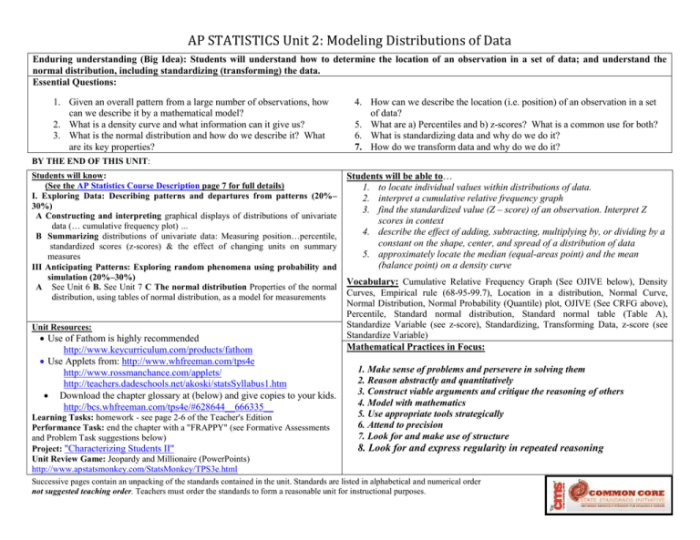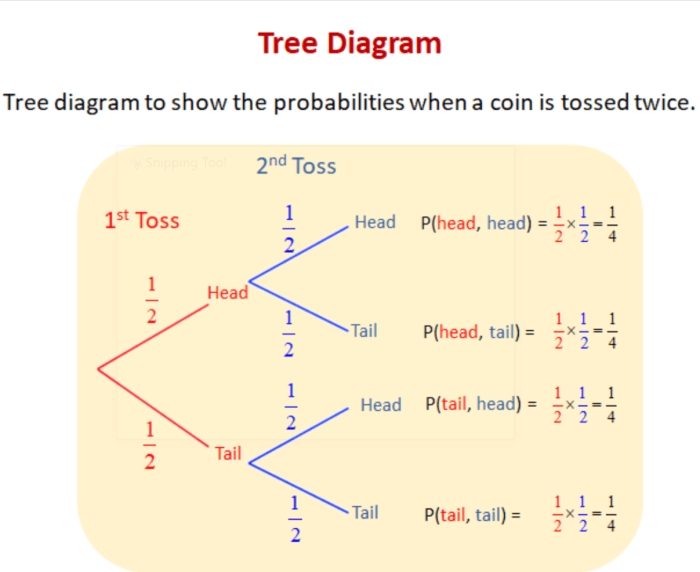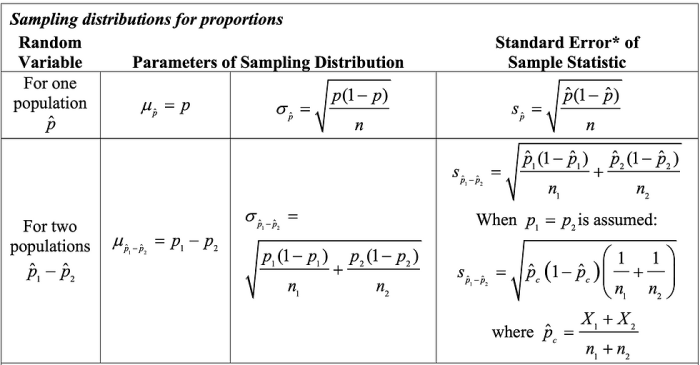Step into the realm of Chapter 7 Frappy AP Stats, where we embark on an adventure into the fascinating world of statistics. This chapter unveils the secrets of sampling distributions, hypothesis testing, and confidence intervals, empowering you to make informed decisions based on data.
Get ready to dive deep into the heart of statistical inference, where we’ll explore the Central Limit Theorem and its profound implications for sampling distributions. We’ll unravel the intricacies of hypothesis testing, guiding you through the steps of formulating hypotheses, setting significance levels, and calculating test statistics.
Overview of Chapter 7 Frappy AP Stats

Chapter 7 of Frappy AP Stats delves into the fascinating realm of probability, a fundamental pillar of statistics. It explores the concepts of random variables, probability distributions, and statistical inference, equipping students with the tools to analyze and make informed decisions based on uncertain outcomes.
Key concepts covered in this chapter include:
- Random variables: Understanding the nature of random variables and their role in probability.
- Probability distributions: Exploring different probability distributions, such as binomial, normal, and Poisson, and their applications in modeling real-world phenomena.
- Statistical inference: Utilizing probability distributions to make inferences about populations based on sample data, including hypothesis testing and confidence intervals.
Random Variables
Random variables are the foundation of probability. They represent numerical outcomes of random experiments, such as the number of heads in a coin flip or the height of a randomly selected person. Random variables can be discrete or continuous, depending on the nature of the possible outcomes.
Sampling Distributions

Sampling distributions are probability distributions of sample statistics (such as means or proportions) that are calculated from random samples of a given population. They are important in statistical inference because they allow us to make inferences about the population based on the sample data.The
Central Limit Theorem (CLT) states that the sampling distribution of the sample mean will be approximately normal, regardless of the shape of the population distribution, provided that the sample size is large enough (usually n ≥ 30). This is a crucial result because it allows us to use normal distribution theory to make inferences about the population mean, even when the population distribution is unknown.There
are different types of sampling distributions, depending on the statistic being considered. For example, the sampling distribution of the sample mean is normal, the sampling distribution of the sample proportion is binomial, and the sampling distribution of the sample variance is chi-square.
Chapter 7 of Frappy AP Stats provides a comprehensive overview of statistical inference. If you’re looking to expand your vocabulary while studying this chapter, check out the Wordly Wise 3000 Book 7 , which includes words like “empirical” and “hypothesis.”
Returning to Chapter 7 of Frappy AP Stats, you’ll learn about confidence intervals and hypothesis testing, essential concepts for understanding statistical significance.
Hypothesis Testing

Hypothesis testing is a fundamental technique in statistical analysis that allows us to make inferences about a population based on a sample. It involves testing a hypothesis about a population parameter and determining whether the available evidence supports or refutes it.
The process of hypothesis testing involves several key steps:
- Formulating hypotheses: We start by stating two hypotheses: the null hypothesis (H0), which represents the claim we are testing, and the alternative hypothesis (Ha), which represents the alternative to H0.
- Setting significance levels: We determine a significance level (α), which is the maximum probability of rejecting H0 when it is actually true (Type I error).
- Calculating test statistics: We use sample data to calculate a test statistic, which measures the discrepancy between the observed data and what we would expect under H0.
- Making a decision: We compare the test statistic to a critical value (determined by α and the sampling distribution) to decide whether to reject H0 or fail to reject H0.
Types of Hypothesis Tests, Chapter 7 frappy ap stats
There are various types of hypothesis tests, each designed for different scenarios:
- One-sample tests: These tests compare a sample mean or proportion to a hypothesized value.
- Two-sample tests: These tests compare the means or proportions of two independent samples.
- Goodness-of-fit tests: These tests assess whether a sample follows a specific distribution or model.
Confidence Intervals: Chapter 7 Frappy Ap Stats

Confidence intervals are a fundamental concept in statistical inference. They provide a range of plausible values for a population parameter based on sample data.
To construct a confidence interval, we need to specify the following:
- The sample mean or proportion
- The sample size
- The desired confidence level
The confidence level is the probability that the true population parameter falls within the confidence interval. Common confidence levels are 90%, 95%, and 99%.
Factors Affecting the Width of Confidence Intervals
The width of a confidence interval is affected by several factors:
- Sample size:Larger sample sizes result in narrower confidence intervals.
- Confidence level:Higher confidence levels result in wider confidence intervals.
- Population variability:More variable populations result in wider confidence intervals.
Applications of Chapter 7 Concepts

The concepts covered in Chapter 7, such as sampling distributions, hypothesis testing, and confidence intervals, are essential for making informed decisions based on data in real-world scenarios. These techniques allow us to draw conclusions about a larger population based on a smaller sample and to quantify the uncertainty associated with our conclusions.
Applications in Various Fields
Chapter 7 concepts are applied in various fields, including:
- Science:Hypothesis testing is used to determine if experimental results are statistically significant.
- Medicine:Confidence intervals are used to estimate the effectiveness of treatments.
- Business:Sampling distributions are used to predict customer behavior and make marketing decisions.
- Social sciences:Hypothesis testing is used to test theories about human behavior.
Importance of Understanding Chapter 7 Concepts
Understanding sampling distributions, hypothesis testing, and confidence intervals is crucial for making informed decisions based on data because they provide a framework for:
- Drawing valid conclusions from samples
- Quantifying the uncertainty associated with our conclusions
- Avoiding common pitfalls in statistical inference
Ethical Considerations
When conducting statistical inference, it is important to consider ethical considerations, such as:
- Sampling bias:Ensuring that the sample is representative of the population of interest
- Data manipulation:Avoiding selective reporting or altering data to support a particular conclusion
- Interpretation:Communicating the results of statistical analysis accurately and without misleading the audience
FAQ Insights
What is the Central Limit Theorem?
The Central Limit Theorem states that the distribution of sample means approaches a normal distribution as the sample size increases, regardless of the shape of the population distribution.
How do I construct a confidence interval?
To construct a confidence interval, you need to calculate the sample mean, standard deviation, and critical value. The confidence interval is then calculated as the sample mean plus or minus the critical value multiplied by the standard deviation.
What is the difference between a one-sample and two-sample hypothesis test?
A one-sample hypothesis test compares the sample mean to a known population mean, while a two-sample hypothesis test compares the means of two independent samples.
